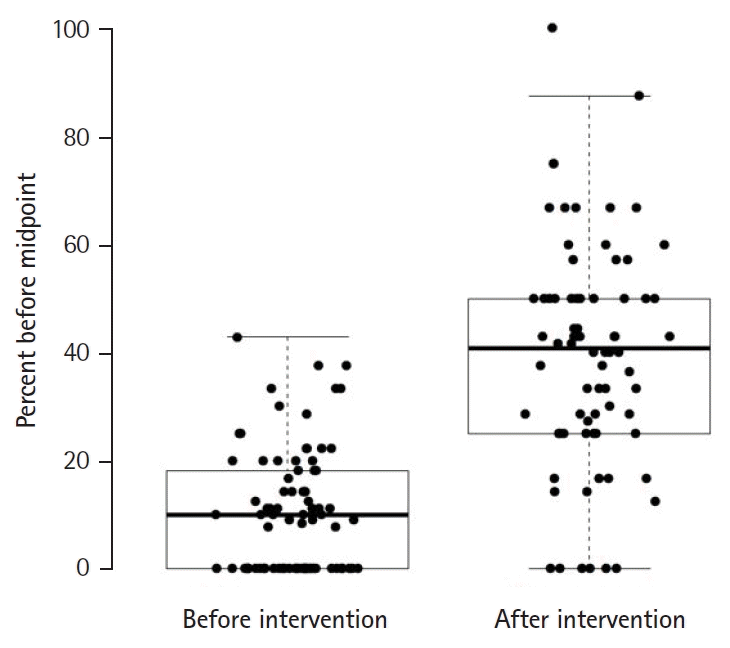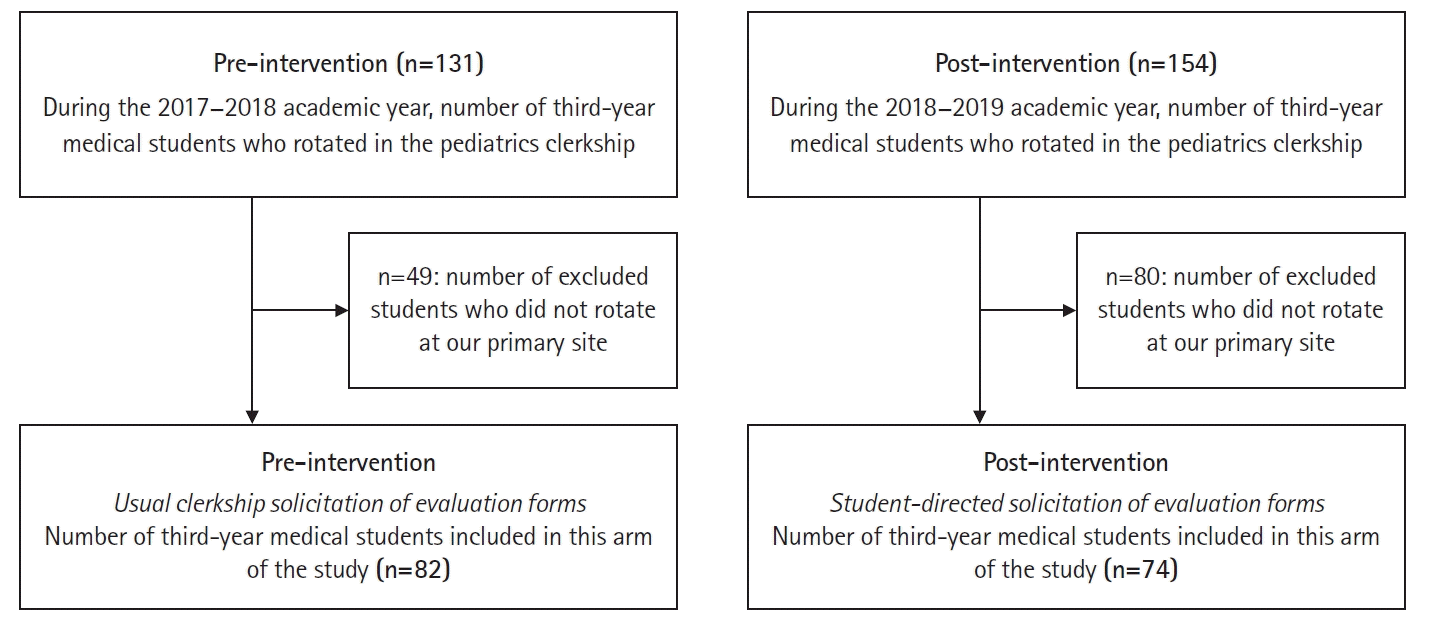1. Liaison Committee on Medical Education. Standards, publications, & notification forms [Internet]. Washington (DC): Liaison Committee on Medical Education;2019. [cited 2019 May 13]. Available from:
http://lcme.org/publications/.
2. Harrison CJ, Konings KD, Schuwirth LW, Wass V, van der Vleuten CP. Changing the culture of assessment: the dominance of the summative assessment paradigm. BMC Med Educ. 2017; 17:73.
https://doi.org/10.1186/s12909-017-0912-5.

3. Christner JG, Dallaghan GB, Briscoe G, Casey P, Fincher RM, Manfred LM, Margo KI, Muscarella P, Richardson JE, Safdieh J, Steiner BD. The community preceptor crisis: recruiting and retaining community-based faculty to teach medical students: a shared perspective from the alliance for clinical education. Teach Learn Med. 2016; 28:329–336.
https://doi.org/10.1080/10401334.2016.1152899.

6. Plymale MA, French J, Donnelly MB, Iocono J, Pulito AR. Variation in faculty evaluations of clerkship students attributable to surgical service. J Surg Educ. 2010; 67:179–183.
https://doi.org/10.1016/j.jsurg.2010.03.003.

7. Rousseau M, Konings KD, Touchie C. Overcoming the barriers of teaching physical examination at the bedside: more than just curriculum design. BMC Med Educ. 2018; 18:302.
https://doi.org/10.1186/s12909-018-1403-z.

8. Damp JB, Dewey CM, Wells Q, Horn L, Kroop SF, Mendes L. Faculty development on clinical teaching skills: an effective model for the busy clinician. J Med Educ Curric Dev. 2016; 3:JMECD.S40798.
https://doi.org/10.4137/JMECD.S40798.

9. Harris PA, Taylor R, Thielke R, Payne J, Gonzalez N, Conde JG. Research electronic data capture (REDCap): a metadata-driven methodology and workflow process for providing translational research informatics support. J Biomed Inform. 2009; 42:377–381.
https://doi.org/10.1016/j.jbi.2008.08.010.

10. R Core Team. R: a language and environment for statistical computing [Internet]. Vienna: R Foundation for Statistical Computing;2015. [cited 2019 May 13]. Available from:
https://www.r-project.org/.
11. Wormald BW, Schoeman S, Somasunderam A, Penn M. Assessment drives learning: an unavoidable truth? Anat Sci Educ. 2009; 2:199–204.
https://doi.org/10.1002/ase.102.

12. Dudas RA, Colbert JM, Goldstein S, Barone MA. Validity of faculty and resident global assessment of medical students’ clinical knowledge during their pediatrics clerkship. Acad Pediatr. 2012; 12:138–141.
https://doi.org/10.1016/j.acap.2011.09.002.

13. Dubosh NM, Fisher J, Lewis J, Ullman EA. Faculty evaluations correlate poorly with medical student examination performance in a fourth-year emergency medicine clerkship. J Emerg Med. 2017; 52:850–855.
https://doi.org/10.1016/j.jemermed.2016.09.018.






 PDF
PDF Citation
Citation Print
Print





 XML Download
XML Download